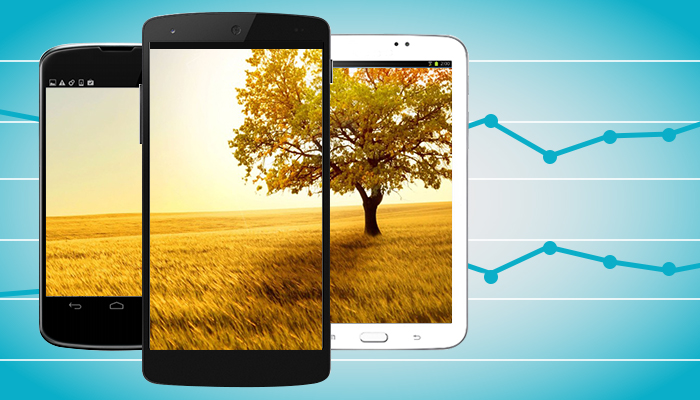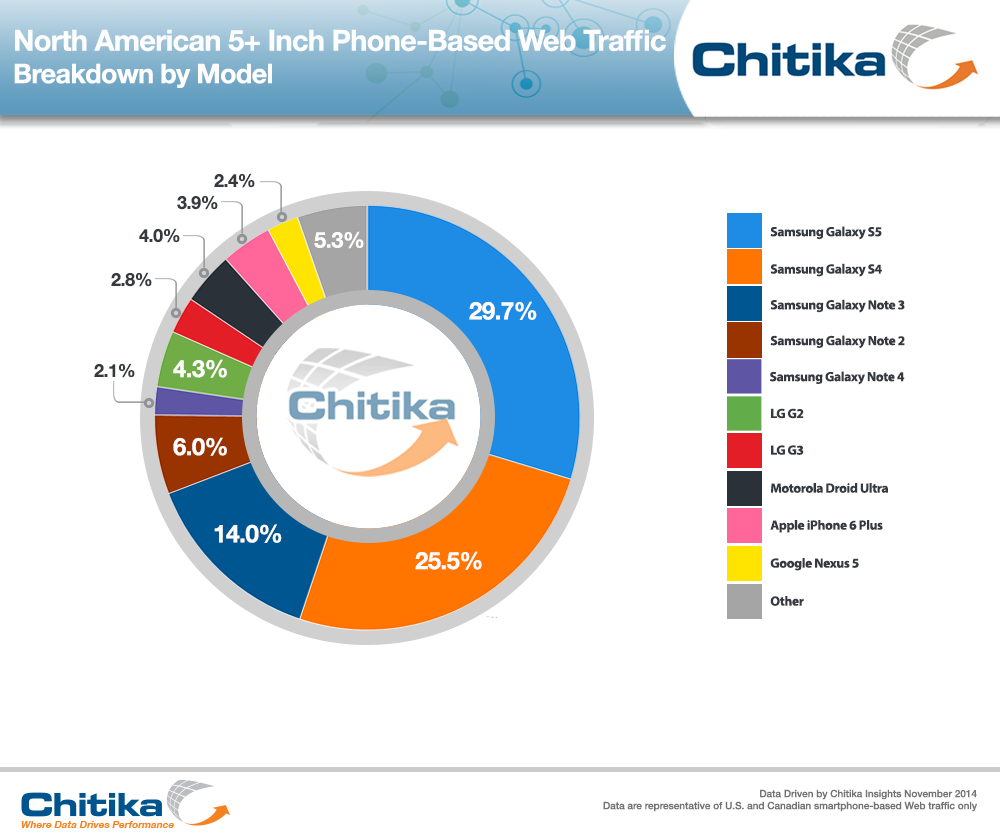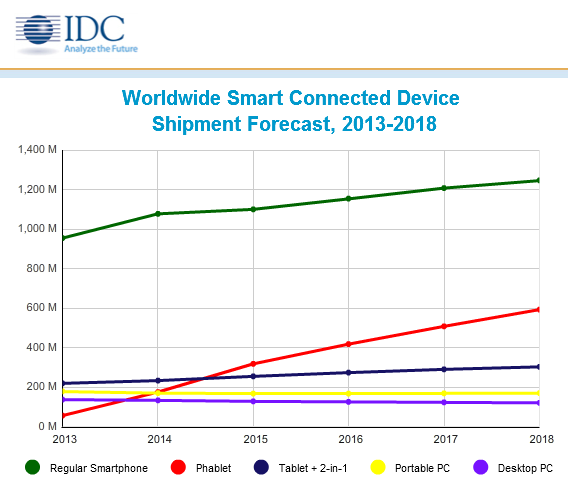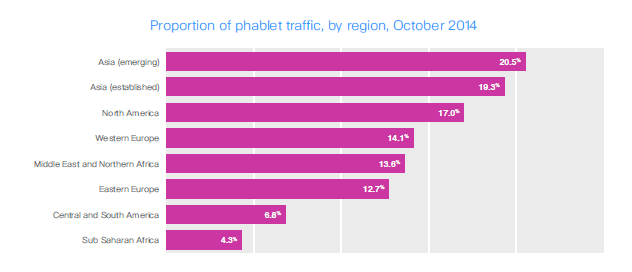Studies Project Marked Increase in Phablet Sales and Usage Over the Next Few Years
Travel to any corner of the globe and you’ll witness how ubiquitous smartphones, tablets, and phablets have become. According to a study released by eMarketer, mobile phone penetration will rise to 69.4% of the global population by 2017. Smartphones are prized because they make life simpler for those on the go and function as mobile personal assistants.
While tablets are less frequently used by people, they’re considered ideal for leisure activities, such as watching movies and playing games, because of their much larger screen sizes. They’re also preferred by some entrepreneurs and professionals when giving presentations.
Meanwhile, phablets (which are essentially smartphone-tablet hybrids), offer the portability and functionality of smartphones but have much larger screen sizes (between 5 and 7 inches). Phablets are less cumbersome than tablets, which helps account for their growing popularity with users.
With Samsung continuously upgrading its Galaxy Note and Apple’s recent release of its first phablet-style iPhone—the iPhone 6 Plus—on September 2014, people are clearly embracing these hybrid gadgets. Other top brands, such as LG and Google Nexus, are also competing for customers in the growing phablet market.
To emphasize how phablets are changing the game for the competitive smartphone market, search-targeted advertising company Chitika recently released a report analyzing the total web traffic phablets have generated in the North American market in 2014. With “Samsung’s sizable number of offerings in the segment, it’s no wonder that users of its larger-screened smartphones drive more than 77% of all phablet-based Web traffic within North America,” observes the Chitika report. [See Figure 1]
Phablets Versus Tablets
While phablets continue to grow in popularity and sales, tablet sales will witness a marked decline in the coming years. “Tablet sales growth is slowing in 2014 as new hardware buyers turn to alternative devices and existing users extend the lifetime of their tablets,” states a recent Gartner report.
Gartner predicts that tablet sales worldwide will reach 229 million units in 2014, which is an 11% increase from last year. This accounts for almost 10% of total worldwide sales of devices in 2014. In contrast, tablet sales worldwide grew 55% in 2013. Gartner further estimates that there will be over 90 million fewer new tablet purchasers, as well as 155 million fewer tablet replacements until 2018.
Meanwhile, according to a separate study conducted by the International Data Corporation (IDC), about 175 million large smartphones, or phablets, will be sold this year, surpassing the sales of portable PCs by almost 5 million units. Moreover, the company projects that 318 million phablets will be shipped internationally in 2015, exceeding the 233 million sales prediction for tablets next year by a major margin. [See Figure 2]
Not only are phablets seeing a significant increase in market share, they have also fared well in terms of total smartphone traffic share globally over the past six months. According to a recent report released by mobile analytics solutions provider Netbiscuits, phablets accounted for 14% of smartphone traffic by the end of October 2014, from just 7% at the end of April 2014. “Largest phablet traffic shares are found in South Korea (49%), China (25%), India (23%), Indonesia (22%), Saudi Arabia (22%) and the United Arab Emirates (21%),” the report said.
Figure 3 contains more detailed information on phablet traffic by region in October 2014:
It is clear from these and other reports that there has been a significant shift in the preferences of consumers. While sales of mobile devices will continue to grow in the coming years due to the strong sales of lower-end smartphones, worldwide tablet sales will gradually decline, as more and more consumers either postpone the purchase of new tablets or shift to phablets.
Consumers are Embracing Phablets
In a survey conducted by Accenture, a global management consulting and technological services company, it was found that 57% of consumers planned to buy a smartphone in 2014, and of those, 48% would opt for a phablet rather than a conventional smartphone.
“The phablet screen size is hitting a sweet spot for a large percentage of consumers wanting more digitally connected lifestyles,” David Sovie—Managing Director of Accenture’s Communications, Media, and Technology group—stated.
“To capitalize on this, consumer technology companies should consider adjusting their digital strategies, research and development investments, product roadmaps and supply chains to focus more on phablet business opportunities and less so, in some cases, on the conventional smartphone market.”
Using Flurry Personas, mobile analytics company Flurry was able to determine the characteristics of phablet users. 35% of phablet users are characterized as Social Influencers, while 12% are Entertainment Enthusiasts. The average phablet user is also a serious reader, and Flurry reports that 10% of total time spent in books on all devices comes from phablets.
How Phablets are Impacting Web Design
The rise of the phablet has also dramatically impacted the web design industry, as the introduction of yet another class of device and range of screen sizes has made responsive web design more vital than ever.
Responsive web design entails serving the same html to every device, and ensures that the website’s elements reposition themselves in a predetermined structure, always adapting precisely to the screen resolution it’s being viewed on.
Websites that are built using the principles of responsive web design will be able to drive more traffic and conversions, as they’re designed to cater not just to desktop users, but also to smartphone, tablet, and phablet users.
To learn more about how responsive websites benefit small businesses, please read this article.
How might the growing popularity of phablets change content and digital marketing in the coming years? Share your insights!
Marketing Digest Writing Team
Latest posts by Marketing Digest Writing Team (see all)
- How Taco Bell Struck Gold with Its Memorable Viral Marketing Campaigns - September 15, 2015
- Salesforce Marketing Cloud Releases New Instagram Marketing Tools - September 12, 2015
- Chrome Begins Pausing Flash Ads by Default to Improve User Experience - September 3, 2015




